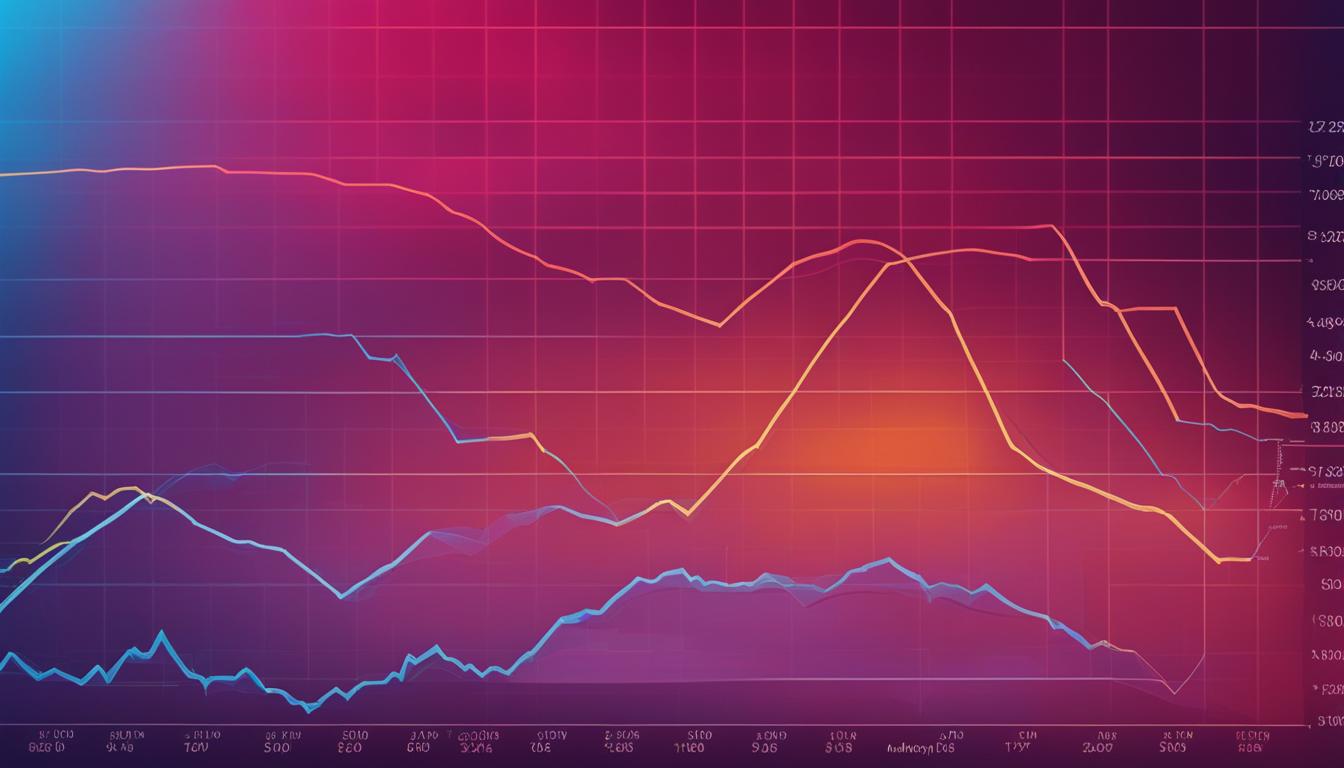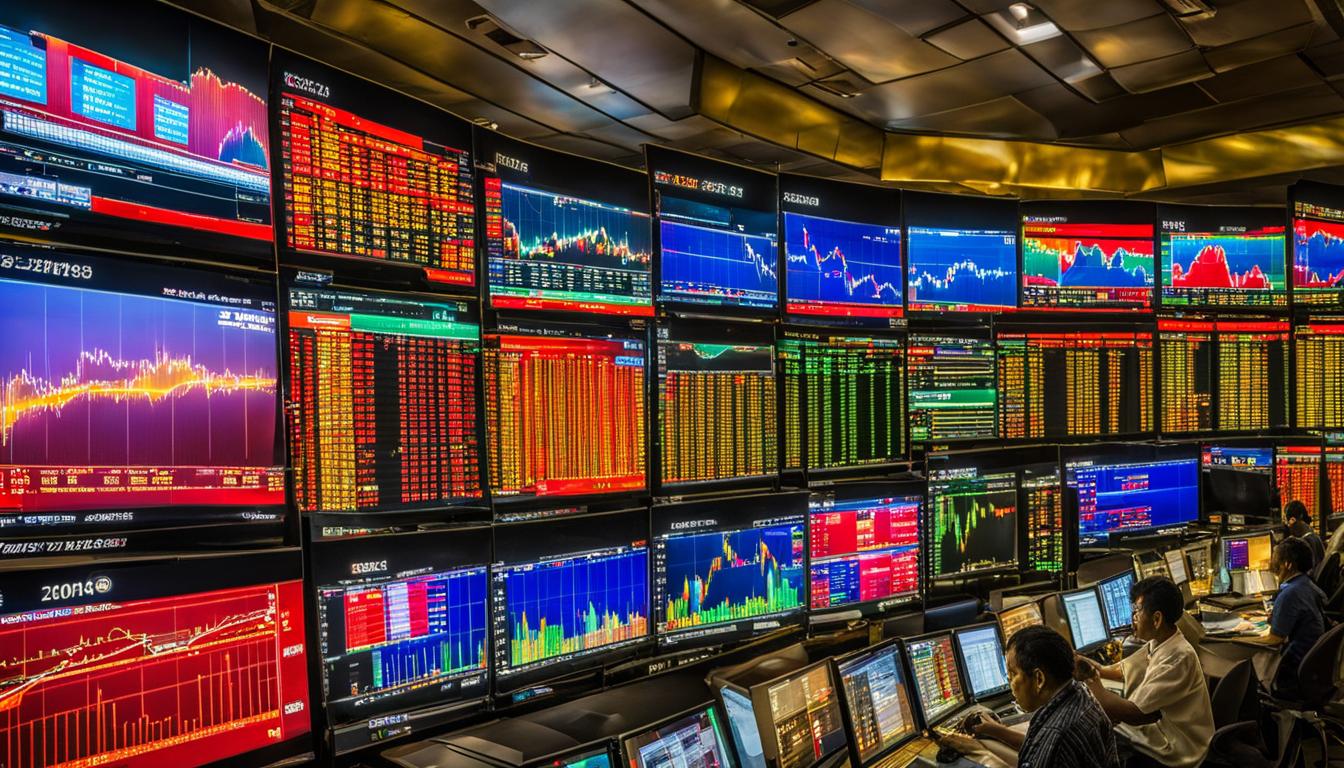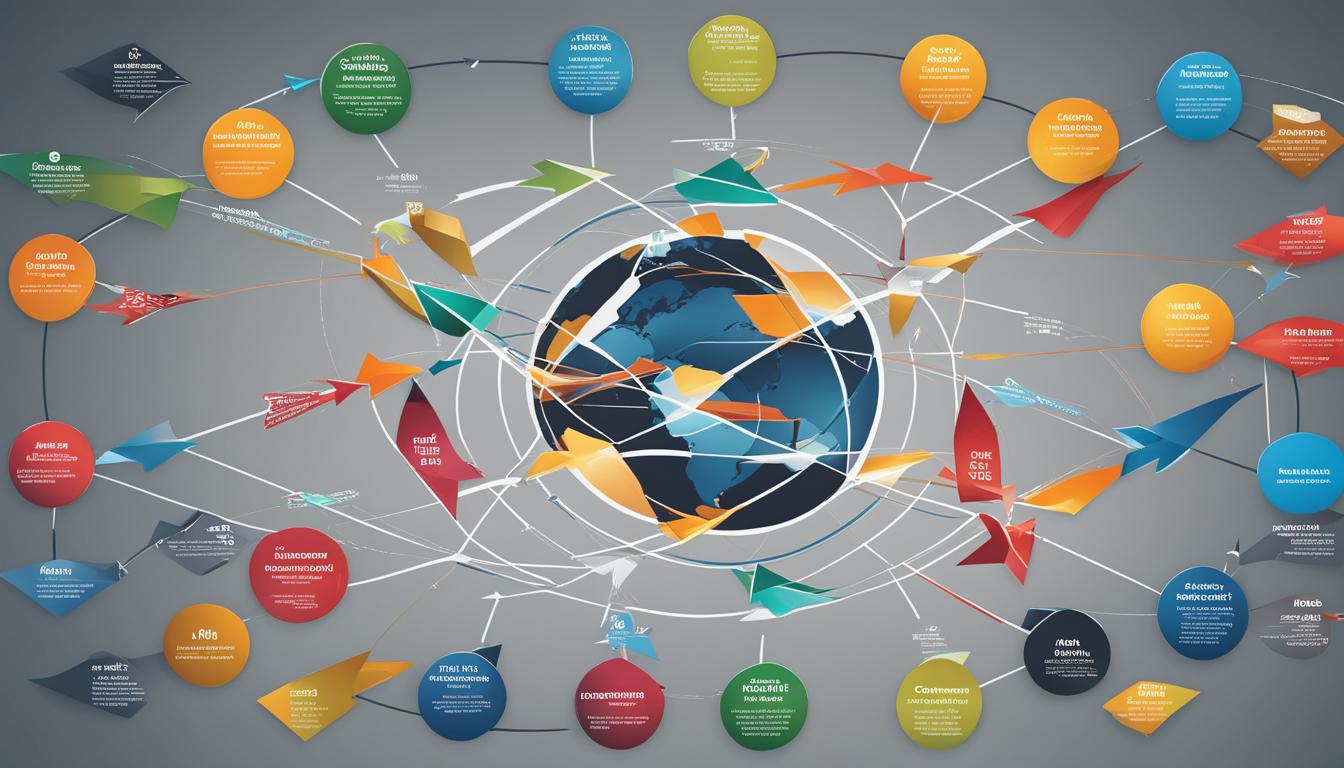Forex Trading and Energy Markets are two interconnected domains that greatly influence each other’s dynamics. The fluctuations in the energy market, especially in oil and natural gas prices, have a profound impact on forex trading strategies and analysis. As energy-exporting and importing countries navigate through these fluctuations, the forex market trends and currency trading tips become highly significant for traders.
In this article, we delve into the multifaceted relationship between energy market fluctuations and forex trading. We explore the nuances of energy market analysis and provide insights into effective forex trading strategies. Stay updated with the latest energy market news and forecasts, and discover the diverse range of forex trading platforms available to meet your trading needs.
Whether you are an energy market enthusiast or a forex trading expert, this guide aims to equip you with valuable knowledge and perspectives on the future of these interconnected domains. Embark on this informative journey to navigate the complexities of energy markets and excel in forex trading.
Understanding the Energy Market
The energy market is a complex and integral component of the global economy, playing a significant role in various sectors, including forex trading. Key commodities in the energy market include oil and natural gas, which serve as primary energy sources for industries, transportation, and residential use. Fluctuations in the energy market are driven by a variety of factors, including supply and demand dynamics, geopolitical events, environmental concerns, technological advancements, OPEC decisions, and global economic conditions.
<!–
–>
Oil: As one of the most widely traded commodities, the price of oil has a direct impact on forex markets. Oil is essential for various industries and is a major input cost in production processes. Changes in oil prices can significantly influence the cost of transportation, which, in turn, affects the overall cost structure of goods and services. Additionally, oil price fluctuations have broader implications for inflation, trade balances, and economic growth.
| Factors Influencing Oil Prices | Impact on Forex Trading |
|---|---|
| Supply and demand dynamics | Affects currency exchange rates and trade balances of energy-exporting and importing countries. |
| Geopolitical events | Can lead to supply disruptions or changes in production quotas, impacting oil prices and currency values. |
| Environmental concerns | Shifts towards renewable energy sources or stricter regulations can affect oil demand and prices. |
| Technological advancements | New extraction techniques or alternative energy solutions can influence oil production and prices. |
Natural Gas: Another important energy commodity is natural gas, which is widely used for heating, electricity generation, and industrial processes. Similar to oil, natural gas prices can impact forex trading dynamics, particularly for countries heavily reliant on natural gas exports or for industries sensitive to changes in energy costs. Factors such as seasonal demand patterns, liquefied natural gas (LNG) exports, and technological advancements in extraction techniques contribute to natural gas price fluctuations.
Impact of Natural Gas on Forex Trading
“Natural gas prices can be influenced by seasonal demand patterns, geopolitical events, and currency fluctuations of natural gas-producing and importing countries, thereby impacting forex pairs and trade strategies.” – Expert Analyst
In summary, understanding the dynamics of the energy market, including the factors driving fluctuations in oil and natural gas prices, is essential for effective forex trading. Traders need to stay informed about global economic conditions, geopolitical developments, environmental factors, and technological advancements to anticipate and navigate market movements successfully.
The Importance of Oil Prices
Oil prices play a critical role in the global economy and have a significant impact on forex markets. As the primary source of energy for various industries, the movement of oil prices can have far-reaching consequences in both domestic and international markets.
Fluctuations in oil prices can directly influence inflation rates, trade balances, and overall economic growth. When oil prices rise, energy-importing countries face increased costs for fuel, transportation, and production, which can lead to higher consumer prices and reduced consumer spending power. Conversely, when oil prices fall, energy-importing countries experience benefits such as lower production costs and increased consumer spending capacity.
Energy-exporting countries, on the other hand, heavily rely on oil revenues to support their economies. During periods of falling oil prices, these countries may face significant challenges, including budget deficits and currency devaluation. The decrease in oil revenue can impact government spending, infrastructure development, and social welfare programs.
In the forex markets, the relationship between oil prices and currency valuations is complex. Energy-exporting countries often see their currencies weaken when oil prices decline due to the reduced inflow of foreign exchange. This devaluation can affect trade balances, foreign investment, and overall economic stability.
Conversely, energy-importing countries can benefit from lower oil prices as it improves their trade balances by reducing import costs. These countries can experience increased economic growth and improved market competitiveness, which can attract foreign investment and stimulate forex market activities.
Understanding the dynamics of oil prices is essential for forex traders as it provides insights into macroeconomic trends, geopolitical stability, and energy market conditions. Keeping a close eye on oil price movements and their potential impact on energy-exporting and importing countries allows traders to make informed decisions and identify profitable trading opportunities.

| Impact of Oil Prices | Energy-Exporting Countries | Energy-Importing Countries |
|---|---|---|
| Economic Growth | Directly impacted by oil price fluctuations | Can experience increased economic growth and market competitiveness |
| Inflation Rates | Can lead to higher inflation rates | Can benefit from lower inflation rates |
| Trade Balances | Dependent on oil revenues | Can improve trade balances |
| Currency Valuation | Devaluation during periods of falling oil prices | Can strengthen currency during periods of lower oil prices |
Natural Gas and Forex Trading
Natural gas is a critical energy commodity that significantly impacts forex trading dynamics. Traders who understand the intricacies of natural gas pricing and its relationship with forex markets can make informed decisions and seize profitable opportunities.
Seasonal demand patterns play a crucial role in natural gas pricing. During the colder months, there is an increased demand for natural gas as households and businesses rely on it for heating purposes. Conversely, in warmer months, the demand decreases as less natural gas is required for heating.
Furthermore, the growing popularity of liquefied natural gas (LNG) exports has contributed to the volatility in natural gas prices. As exporting countries increase their LNG capabilities and penetrate global markets, the supply and demand dynamics of natural gas are greatly influenced. Traders need to stay updated on global LNG export trends and their impact on natural gas prices.
Technological advancements in natural gas extraction also shape pricing trends. Innovations such as hydraulic fracturing (fracking) and horizontal drilling have unlocked vast reserves of natural gas, leading to increased supply and potentially lower prices.
To gain a deeper understanding of the natural gas market, traders can analyze historical pricing data, monitor seasonal demand patterns, and stay informed about global LNG export trends. This knowledge can help traders identify potential entry and exit points for natural gas-related forex trades.
| Factors Affecting Natural Gas Prices | Impact on Forex Trading |
|---|---|
| Seasonal demand patterns | Natural gas prices can influence the economic performance of energy-importing countries, which in turn affects their currency values. |
| LNG exports | Changes in LNG export volumes and destinations can affect the supply and demand dynamics of natural gas, leading to price fluctuations in forex markets. |
| Technological advancements in extraction | Innovations in natural gas extraction can impact the overall supply and pricing of the commodity, influencing forex trading strategies. |
Traders should also keep an eye on geopolitical events that may disrupt natural gas supply chains, as these events can have significant repercussions on both natural gas prices and forex markets. By staying informed and analyzing these various factors, traders can make well-informed decisions when trading natural gas and forex pairs.

Factors Affecting Natural Gas Prices
Natural gas prices are influenced by several key factors that traders need to consider when analyzing the market. These factors include:
- Supply and Demand Dynamics: Natural gas prices are strongly influenced by the balance between supply and demand. When demand exceeds supply, prices tend to rise, and vice versa. Traders closely monitor factors such as industrial demand, residential consumption, and LNG exports to assess supply and demand dynamics.
- Weather Patterns: Weather conditions play a significant role in natural gas prices. Cold winters increase demand for heating, driving up prices, while hot summers lead to higher electricity generation needs, affecting prices as well. Traders closely monitor weather forecasts and seasonal patterns to anticipate potential price fluctuations.
- Geopolitical Events: Geopolitical events can have a significant impact on natural gas prices. Disruptions in supply chains due to political unrest, conflicts, or trade disputes can lead to price volatility. Traders monitor geopolitical developments worldwide to identify potential market-moving events.
- Forex Pairs: Natural gas prices can also be influenced by forex pairs associated with natural gas-producing and importing countries. Currency fluctuations can impact the cost of natural gas imports and exports, directly affecting prices. Traders analyze forex trends and correlations to gain insights into potential natural gas price movements.
Understanding these factors is crucial for traders looking to profit from the natural gas market. By monitoring supply and demand dynamics, weather patterns, geopolitical events, and forex pairs, traders can make more informed trading decisions and capitalize on price fluctuations.

The Trend of Commodity Trading
The commodity trading industry has experienced significant growth and shows promising potential for further expansion in the coming years. In fact, commodity trading value pools have nearly doubled in recent years, driven by various factors including the energy transition and trade flow disruptions. Whether you are a new player or an established entity in the commodity trading sector, understanding the industry trends, success factors, and potential business models is essential for continued growth and success.
“The future of commodity trading is full of opportunities, but staying ahead of the curve requires adaptability and a deep understanding of the industry dynamics.”
Industry Trends
Keeping tabs on industry trends is crucial for commodity traders, as it provides valuable insights into market dynamics, emerging opportunities, and potential risks. Here are some key trends shaping the future of commodity trading:
- The Energy Transition: Commodity trading is being influenced by the global energy transition, with a shift towards renewable energy sources and increased environmental consciousness. Traders need to adapt to changing commodity demands and explore new opportunities in green energy.
- Technological Advancements: The integration of technology, such as blockchain and artificial intelligence, is revolutionizing commodity trading, streamlining processes, enhancing efficiency, and reducing transactional risks.
- Geopolitical Factors: Geopolitical events, trade tensions, and regulatory changes can significantly impact commodity prices and trade flows. Staying informed about political developments is crucial for managing risks and capitalizing on emerging opportunities.
- Global Supply Chains: The strengthening of global supply chains, coupled with advancements in logistics and transportation, enables traders to access a wider range of markets, diversify their portfolio, and leverage arbitrage opportunities.
Success Factors
Success in commodity trading hinges on various factors that traders must consider in their strategies and decision-making processes. These success factors include:
- Supply and Demand Analysis: A deep understanding of supply and demand dynamics across different commodities and regions is crucial for identifying market trends, price fluctuations, and potential trading opportunities.
- Risk Management: Effective risk management strategies, including hedging techniques and diversified portfolios, help traders mitigate losses and protect their investments from unforeseen market volatility.
- Market Intelligence: Timely access to accurate market information, such as commodity pricing, global economic indicators, and geopolitical developments, empowers traders to make informed decisions and capitalize on market trends.
- Adaptability and Flexibility: The commodity trading landscape is constantly evolving, and successful traders must be adaptable, recognizing new opportunities, embracing emerging technologies, and adjusting their strategies accordingly.
Business Models
Commodity traders can adopt different business models based on their expertise, resources, and risk appetite. Here are three commonly employed business models in commodity trading:
| Business Model | Description |
|---|---|
| Physical Trading | Traders engage in the physical buying and selling of commodities, leveraging their expertise in logistics, storage, and transportation to facilitate smooth transactions. |
| Paper Trading | Traders focus on trading futures contracts, options, and other derivatives related to commodities without directly handling the physical assets. This approach allows for flexibility and speculative trading. |
| Service Provision | Traders provide specialized services to the commodity trading community, including risk management, financial advisory, storage, and transportation logistics. |
Each business model presents unique advantages and considerations. Traders must carefully evaluate their capabilities, risk tolerance, and market conditions to determine the most suitable business model for their operations.
Image:

As the commodity trading industry evolves, staying well-informed about industry trends, incorporating success factors into trading strategies, and selecting the right business model are critical for long-term growth and profitability.
The Impact of the Energy Transition on Commodity Trading
The ongoing energy transition is reshaping the landscape of commodity trading. As the world shifts towards sustainable and renewable energy sources, the volatility in commodity markets is increasing, trade flows are being disrupted, and commercial relationships are being redefined. These developments present both unique opportunities and challenges for commodity traders, necessitating a thorough understanding of the impact of the energy transition on the industry.
Increased Volatility
The energy transition brings about inherent volatility in commodity markets. The fluctuating demand for different energy sources, such as fossil fuels, renewables, and emerging technologies, creates an uncertain trading environment. Traders must adapt to changing market dynamics, anticipate shifts in supply and demand, and employ effective risk management strategies to navigate the increased volatility.
Disrupted Trade Flows
With the energy transition, trade flows are being reshaped as countries transition from being energy exporters to importers or vice versa. Traditional energy-exporting countries are diversifying their economies and reducing their dependence on fossil fuel exports. This shift disrupts established trade patterns and requires traders to identify new opportunities and adapt their trading strategies accordingly.
Redefining Commodities
The energy transition is redefining the very nature of commodities. As the demand for renewable energy sources increases, commodities such as solar panels, wind turbines, and battery storage systems are gaining prominence. Traders need to familiarize themselves with these emerging commodities, understand their market dynamics, and incorporate them into their trading strategies.
Altered Commercial Relationships
The energy transition also alters commercial relationships among market participants. New players, such as renewable energy companies and technology providers, enter the commodity trading arena, while traditional energy companies adapt their business models to incorporate sustainable practices. Traders must forge new partnerships, build collaborative networks, and leverage these altered commercial relationships to thrive in the evolving commodity trading landscape.
To illustrate the impact of the energy transition on commodity trading, consider the following table:
| Factors | Before Energy Transition | After Energy Transition |
|---|---|---|
| Volatility | Relatively stable with traditional energy sources | Increased volatility due to shifting market dynamics |
| Trade Flows | Established trade patterns with energy-exporting countries | Disrupted trade flows as countries transition roles |
| Commodities | Mainly fossil fuels | Inclusion of renewable energy technologies |
| Commercial Relationships | Traditional energy companies dominate | Emergence of renewable energy companies and technology providers |

The image above visually represents the concept of the energy transition, highlighting the shift towards renewable energy sources and its impact on commodity trading.
Success Factors in Commodity Trading
When it comes to succeeding in commodity trading, several key factors play a crucial role. These factors include in-depth analysis of supply and demand, robust risk management strategies, and access to market intelligence. Traders who possess the ability to accurately assess supply and demand dynamics, effectively manage risk, and make informed decisions based on market insights have a higher likelihood of achieving success in commodity trading.
Supply and Demand Analysis: A thorough understanding of supply and demand dynamics is essential for commodity traders. By analyzing factors such as production levels, inventories, global demand, and geopolitical events, traders can identify potential opportunities and risks in the market. This analysis allows them to make informed decisions regarding the buying and selling of commodities.
Risk Management: Effective risk management is a critical success factor in commodity trading. Traders must develop robust strategies to mitigate potential risks, such as price fluctuations, supply chain disruptions, and regulatory changes. Implementing risk management tools, such as stop-loss orders and diversification strategies, helps traders protect their investments and minimize losses.
Market Intelligence: Access to accurate and timely market intelligence is invaluable for commodity traders. By staying informed about market trends, news, and financial analysis, traders can make better-informed decisions. Market intelligence helps traders anticipate market movements, identify emerging opportunities, and stay ahead of their competitors.
“Successful commodity traders possess the ability to adapt to changing market conditions, capitalize on emerging trends, and manage risks effectively. By combining supply and demand analysis, robust risk management, and market intelligence, traders can navigate the complexities of commodity trading with confidence.”
H3: Examples of Success Factors in Commodity Trading
Here are some examples of how success factors contribute to effective commodity trading:
- Supply and Demand Analysis: A trader analyzes global oil production and identifies a potential supply shortage due to geopolitical tensions. By taking a long position on oil contracts, the trader benefits from the subsequent price increase.
- Risk Management: A trader implements a hedging strategy to protect against price fluctuations in the natural gas market. By entering into futures contracts and options, the trader mitigates the risk of adverse price movements.
- Market Intelligence: A trader monitors market news and notices an increase in demand for renewable energy sources. Recognizing the potential impact on coal prices, the trader adjusts their portfolio by reducing exposure to coal-related commodities and increasing investments in renewable energy commodities.
These examples demonstrate how the success factors of supply and demand analysis, risk management, and market intelligence contribute to profitable trading strategies in the commodity market.
| Success Factors | Impact on Commodity Trading |
|---|---|
| Supply and Demand Analysis | Accurate analysis helps identify profitable opportunities and potential risks. |
| Risk Management | Effective risk management strategies protect investments and minimize losses. |
| Market Intelligence | Access to market insights helps traders make informed decisions and stay ahead of the competition. |
Table: Impact of Success Factors on Commodity Trading

Traders must consider their goals, risk appetite, available resources, and market conditions when choosing a business model. It is essential to assess the market dynamics, regulatory requirements, and competitive landscape to make informed decisions. Additionally, traders may adopt a hybrid approach, combining elements of different business models to optimize their trading strategies.
Conclusion and Future Outlook
Commodity trading, particularly in the energy markets, presents lucrative opportunities for traders. The ability to navigate the intricate dynamics of energy market fluctuations, supply and demand factors, and the impact of the ongoing energy transition is crucial for success in this field. As the commodity trading industry evolves, traders must adapt their strategies to capitalize on new trends, harness the power of technology and data analytics, and stay well-informed about the latest market developments.
Looking ahead, the future of commodity trading holds immense potential. The energy markets, in particular, are expected to witness significant growth and transformation. The increasing global focus on sustainable energy solutions and the shift towards cleaner alternatives will reshape the energy landscape, creating new avenues for traders to explore.
To thrive in the future of commodity trading, traders must stay attuned to emerging market trends and developments. This includes closely monitoring the progressive energy transition, understanding the implications of evolving supply and demand dynamics, and staying informed about advancements in trading technologies. By embracing innovation and continuously upgrading their trading strategies, traders can position themselves at the forefront of the ever-evolving commodity trading industry.